
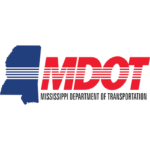
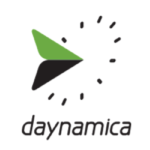
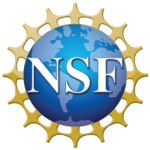
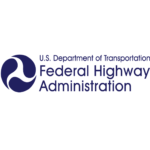


NETWORK ECONOMETRICS AND COMPLEMENTARY AND CPMPETITIVE LINKS
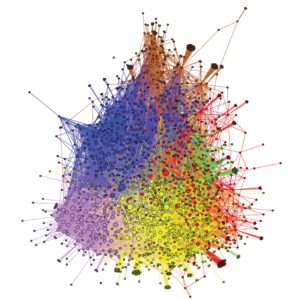
Networks have become a ubiquitous tool in understanding both natural and engineered systems, including, climate systems, physiological systems, civil infrastructure systems, social interactions, and biochemical reactions. The current project introduces concepts, theories, and methods dealing with network econometrics to gain a deeper understanding of how the spatial components interact in a complex network. It introduces distinctive network weight matrices to extract the existing spatial dependency between links. This novice project has been tested on highway networks, but has further applications in models of physical flow and in social networks where links or nodes may be either competitive or complementary with each other The mixed-methods design and spatial integrative framework of the project will offer pragmatic advantages for identifying integrated policy solutions across regions to discern human mobility and behavior.
CONNECTED COMMUNITIES IN THE ERA OF ELECTRIFICATION AND AUTONOMY
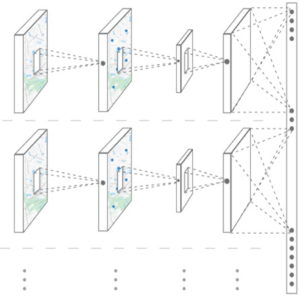 The convergence of sensory and communication technologies with data collection efforts has enabled us to collect travel diaries over a longer period. Geo-location data gathered by smartphone applications have the potential to monitor both the activity location and the activity time of individuals. Capturing human mobility patterns and space activities reveals social relationships between individuals, and facilitates defining connected communities. This project answers: “How can we cluster individuals via the similarities and dissimilarities of time and space activities and detect connected communities?” “How well does a detected connected community represent the lifestyle of individuals in the same cluster?” and “How much do we know about the individuals in the same cluster, to the extent that possible, that meaningful social relationships could be created?”
The convergence of sensory and communication technologies with data collection efforts has enabled us to collect travel diaries over a longer period. Geo-location data gathered by smartphone applications have the potential to monitor both the activity location and the activity time of individuals. Capturing human mobility patterns and space activities reveals social relationships between individuals, and facilitates defining connected communities. This project answers: “How can we cluster individuals via the similarities and dissimilarities of time and space activities and detect connected communities?” “How well does a detected connected community represent the lifestyle of individuals in the same cluster?” and “How much do we know about the individuals in the same cluster, to the extent that possible, that meaningful social relationships could be created?”
REDUCING THE VULNERABILITY OF DISADVANTAGED COMMUNITIES TO CASCADING HAZARDS
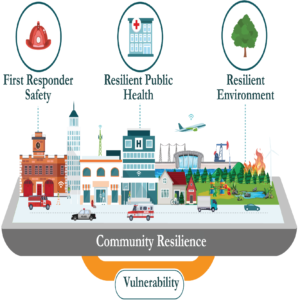 The average annual loss in the U.S. to natural hazards between 2016–2020 was approximately $121 billion, with records clearly showing a rising trend in billion-dollar disaster events. Notably, there has been an unprecedented increase in the frequency and severity of wildfires, with 2020 marked as the most active wildfire year across the western US. While direct impacts from wildfires are devastating as singular events, the legacy of wildfires may last long after the flames have been extinguished. Following wildfires, cascading hazards such as landslides, debris flow, and flooding may occur, resulting in a catastrophic ripple effect. A pertinent example is the deadliest debris flow events in California’s history following the December 2017 California fires and extreme rainfall over the burned area. This multidisciplinary project seeks to reduce the vulnerability of disadvantaged communities to the impacts of wildfire-related cascading hazards under a changing climate.
The average annual loss in the U.S. to natural hazards between 2016–2020 was approximately $121 billion, with records clearly showing a rising trend in billion-dollar disaster events. Notably, there has been an unprecedented increase in the frequency and severity of wildfires, with 2020 marked as the most active wildfire year across the western US. While direct impacts from wildfires are devastating as singular events, the legacy of wildfires may last long after the flames have been extinguished. Following wildfires, cascading hazards such as landslides, debris flow, and flooding may occur, resulting in a catastrophic ripple effect. A pertinent example is the deadliest debris flow events in California’s history following the December 2017 California fires and extreme rainfall over the burned area. This multidisciplinary project seeks to reduce the vulnerability of disadvantaged communities to the impacts of wildfire-related cascading hazards under a changing climate.
ACCESS, EQUITY, AND JUSTICE IN TRANSPORT SERVICES
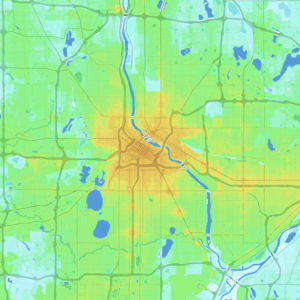 Throughout the 20th century, minority groups and low-income populations have fought for equal access to education, jobs, healthcare, and public transit. In 1955, African Americans in Montgomery, Alabama began The Bus Boycott, which ended up going before the Supreme Court and integrating transport across the United States. The Bus Boycott was the first ripple in a wave that led to the signing of the Civil Rights Act in 1964. Though circumstances have changed, gaps in mobility options and access persist. In 2015, for example, 19.7% of African American households nationally had no car, while the comparable number for White households was 6.5%. This research assesses access to transport services and access to public services by transport systems for all members of disadvantaged groups through the lens of equitable and justifiable transport systems.
Throughout the 20th century, minority groups and low-income populations have fought for equal access to education, jobs, healthcare, and public transit. In 1955, African Americans in Montgomery, Alabama began The Bus Boycott, which ended up going before the Supreme Court and integrating transport across the United States. The Bus Boycott was the first ripple in a wave that led to the signing of the Civil Rights Act in 1964. Though circumstances have changed, gaps in mobility options and access persist. In 2015, for example, 19.7% of African American households nationally had no car, while the comparable number for White households was 6.5%. This research assesses access to transport services and access to public services by transport systems for all members of disadvantaged groups through the lens of equitable and justifiable transport systems.
EMERGING LOGISTICS TECHNOLOGY IN THE ERA OF MOBILITY-AS-A-SERVICE
 Urban goods distribution is increasingly under pressure from the expanding volume of online purchases that surged due to the pandemic and growing customer expectations on delivery performance. In this highly competitive setting, the ubiquity of communication technologies, accessibility of information, flexibility of resources in time and space, and an open-source revolution has facilitated the evolution of crowd-shipping initiatives. Crowd-shipping is an innovative delivery model using digital platforms to match the demand for shipments with supply using excess transport capacity and drivers from the crowd. This sharing economy delivery concept has attracted growing attention to address the pressing challenges of urban goods deliveries, and has fostered the creation of new enterprises and business models in the logistics sector. This project provides several perspectives on the behavioral and managerial platform performance from the digital space of the platform into real-world operations.
Urban goods distribution is increasingly under pressure from the expanding volume of online purchases that surged due to the pandemic and growing customer expectations on delivery performance. In this highly competitive setting, the ubiquity of communication technologies, accessibility of information, flexibility of resources in time and space, and an open-source revolution has facilitated the evolution of crowd-shipping initiatives. Crowd-shipping is an innovative delivery model using digital platforms to match the demand for shipments with supply using excess transport capacity and drivers from the crowd. This sharing economy delivery concept has attracted growing attention to address the pressing challenges of urban goods deliveries, and has fostered the creation of new enterprises and business models in the logistics sector. This project provides several perspectives on the behavioral and managerial platform performance from the digital space of the platform into real-world operations.
THE NEW TRANSPORT LANDSCAPE AND THE FUTURE OF CITIES
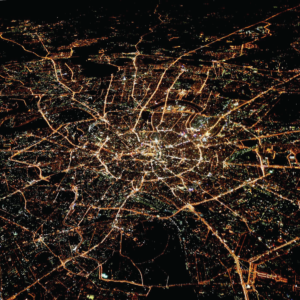 Research on electrification, autonomy, and mobility-as-a-service, with particular emphasis on technology, is gaining momentum in the realms of transport and logistics. Little is known, however, about the behavioral, operational performance, resilience, and sustainability of the systems and how they impact urban form and city development. By removing the burden of vehicle ownership, city residents have more disposable income to pay for rent in metropolitan cities and benefit from urban amenities. This raises the value of cities. On the flip side, autonomy and mobility-as-a-service makes travel between urban and exurban areas easier and faster. This means boosting access, which increases sprawl and separation between home and work. This project explores travel behavior and urban design in the era of electrification, autonomy, and mobility-as-a-service
Research on electrification, autonomy, and mobility-as-a-service, with particular emphasis on technology, is gaining momentum in the realms of transport and logistics. Little is known, however, about the behavioral, operational performance, resilience, and sustainability of the systems and how they impact urban form and city development. By removing the burden of vehicle ownership, city residents have more disposable income to pay for rent in metropolitan cities and benefit from urban amenities. This raises the value of cities. On the flip side, autonomy and mobility-as-a-service makes travel between urban and exurban areas easier and faster. This means boosting access, which increases sprawl and separation between home and work. This project explores travel behavior and urban design in the era of electrification, autonomy, and mobility-as-a-service
